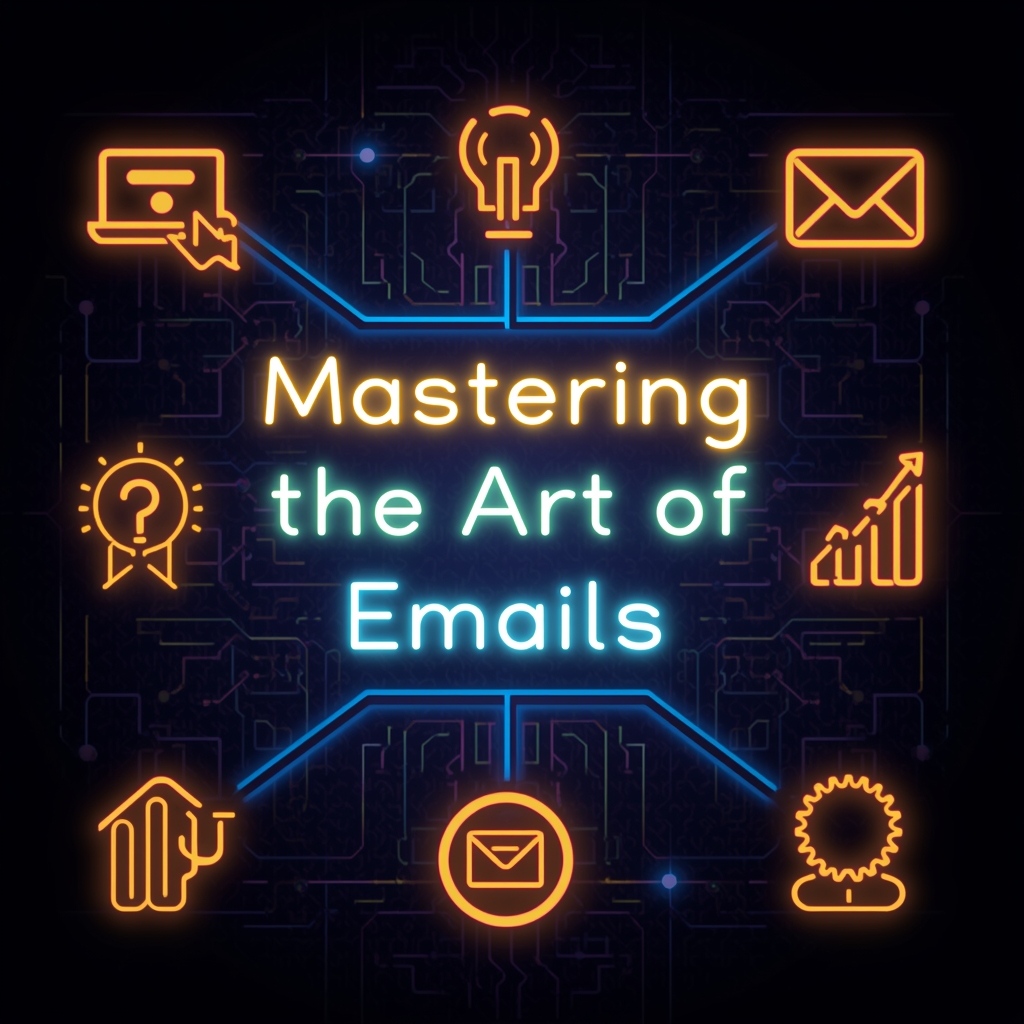In a world where inboxes are flooded with promotions, newsletters, and updates, the ability to write a marketing email that actually gets opened—and acted upon—is a true skill. Despite the rise of social media, email marketing remains one of the most effective digital channels, delivering an average ROI of $42 for every $1 spent. Mastering the Art of Marketing Emails: A Step-by-Step Guide to Writing Emails That Convert

But the key lies in crafting an email that connects with the reader. A poorly written email gets deleted within seconds, while a well-crafted one can turn a casual subscriber into a loyal customer.
So, how do you write a marketing email that stands out? Let’s break it down step by step.
Step 1: Define Your Goal
Before you start typing, ask yourself: What is the purpose of this email?
Is it to:
- Promote a product?
- Share a discount or limited-time offer?
- Educate your audience?
- Nurture leads?
- Drive traffic to your website?
Having a clear goal ensures your message stays focused and doesn’t overwhelm the reader.
Step 2: Know Your Audience
The best emails feel personal. To achieve this, segment your email list. Group subscribers based on demographics, behavior, or purchase history. For example:
- Send product recommendations to customers who recently purchased something similar.
- Share beginner-friendly tips with new subscribers.
- Offer loyalty rewards to long-time customers.
Relevance is key—no one wants a generic sales pitch.
Step 3: Write a Compelling Subject Line
Your subject line is the gateway to your email. If it’s not interesting, the email won’t even get opened.
Tips for strong subject lines:
- Keep it short (40–50 characters).
- Use curiosity or urgency without being clickbait.
- Personalize it with the recipient’s name or interest.
- Test different versions (A/B testing).
Example: Instead of “Our New Collection is Here,” try “Sneak Peek: Be the First to Shop Our New Styles.”
Step 4: Hook Them with the Opening Line
Your opening line should immediately grab attention and set the tone. Think of it as the “elevator pitch” of your email.
Examples:
- “You deserve a little something special today…”
- “Struggling with [problem]? We’ve got the solution.”
- “Here’s what you missed this week.”
Step 5: Keep the Body Clear and Concise
The body is where you deliver your message. Avoid long, cluttered paragraphs—people skim emails.
Best practices:
- Write in short sentences and bullet points.
- Highlight benefits, not just features.
- Use simple, conversational language.
- Break up text with visuals like images, GIFs, or buttons.
Example: Instead of writing, “Our shoes are made with the highest-quality materials for durability,” write, “Shoes designed to last for years—no more replacing them every season.”
Step 6: Add a Clear Call-to-Action (CTA)
Every email should lead the reader toward a single action. Whether it’s buying a product, signing up for a webinar, or reading a blog, make the CTA obvious.
Tips:
- Use action-oriented language (“Shop Now,” “Get Started,” “Read More”).
- Place the CTA button where it’s easy to find.
- Limit to one or two CTAs per email.
Step 7: Personalize Whenever Possible
Customers expect personalization. Use data to make your email feel tailored.
Ideas include:
- Addressing the recipient by name.
- Recommending products based on their past purchases.
- Sending location-based offers.
- Acknowledging milestones like birthdays or anniversaries.
Personalization increases open rates and conversions significantly.
Step 8: Optimize for Mobile
More than half of emails are opened on mobile devices. If your email isn’t mobile-friendly, you’re losing readers.
Checklist for mobile optimization:
- Use a single-column layout.
- Keep subject lines short.
- Make CTA buttons large and tappable.
- Compress images for faster loading.
Step 9: Test and Measure Results
Email marketing is never “one and done.” Test and refine continuously.
Metrics to track:
- Open rates (effectiveness of subject lines).
- Click-through rates (CTA performance).
- Conversion rates (sales or sign-ups).
- Unsubscribe rates (content relevance).
A/B test subject lines, email designs, CTAs, and sending times to see what works best.
Step 10: Stay Consistent and Provide Value
Consistency builds trust. Don’t just send emails when you want to sell something. Provide ongoing value through:
- Educational content
- Insider tips
- Exclusive updates
- Special offers for loyal subscribers
When your audience feels they benefit from your emails, they’re more likely to engage when you make an offer.
Final Thoughts
Writing a great marketing email is both an art and a science. It’s about blending creativity with strategy—crafting subject lines that spark curiosity, messages that resonate, and calls-to-action that drive results.
By following these steps and consistently providing value, your marketing emails can become a powerful tool to build relationships, increase conversions, and grow your brand.
FAQs on Marketing Emails
Q1. How long should a marketing email be?
It should be as long as it needs to deliver your message but concise enough to keep attention. Generally, 100–200 words is ideal for promotional emails.
Q2. How often should I send marketing emails?
It depends on your audience and industry. For most businesses, 1–2 emails per week works well. Avoid overwhelming subscribers with too many messages.
Q3. What makes a good marketing email?
A clear goal, personalized content, a strong subject line, concise body text, and a compelling call-to-action make an email effective.
Q4. Do images help in marketing emails?
Yes, visuals grab attention and make emails more engaging. However, always balance text and images to avoid slow loading times or spam filters.
Q5. Should I buy an email list?
No. Purchased lists often result in low engagement, high unsubscribe rates, and potential legal issues. Always build your list organically through sign-ups and opt-ins.
Mastering the Art of Marketing Emails: A Step-by-Step Guide to Writing Emails That Convert


